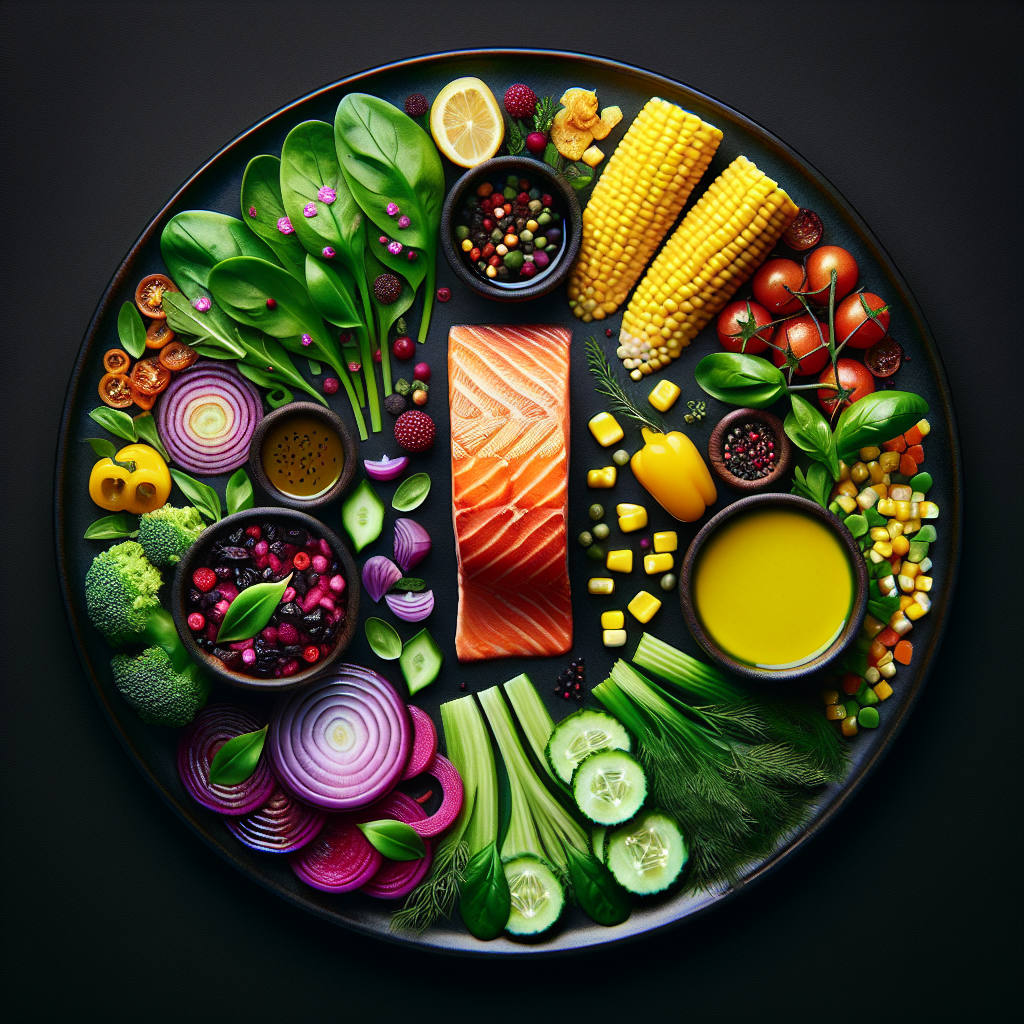Table of Contents
Introduction

Indonesia is not only known for its rich cultural heritage and breathtaking landscapes but also for its diverse and flavorful cuisine. Indonesian dishes are a harmonious blend of spices, herbs, and fresh ingredients that create a burst of flavors in every bite. However, there is more to Indonesian cuisine than just taste. The art of plating, known as “padu padan warna dalam hidangan” in Indonesian, plays a crucial role in enhancing the visual appeal of a dish. This article explores the significance of color coordination in Indonesian cuisine and how it adds to the overall dining experience.
The Importance of Color in Indonesian Cuisine
Color is an essential element in Indonesian cuisine as it not only stimulates the appetite but also reflects the cultural and regional diversity of the country. Each region in Indonesia has its own unique culinary traditions, and color plays a significant role in distinguishing these dishes. From vibrant reds to earthy browns, the colors used in Indonesian cuisine are a reflection of the ingredients used and the cooking techniques employed.
1. Cultural Significance
Indonesia is a culturally diverse country with more than 17,000 islands, each having its own distinct traditions and customs. The use of color in Indonesian cuisine is deeply rooted in these cultural practices. For example, in Javanese cuisine, the color white is often associated with purity and is used in dishes served during religious ceremonies. On the other hand, in Balinese cuisine, the color yellow is considered sacred and is used in offerings to the gods.
2. Visual Appeal
Color coordination in Indonesian cuisine is not only about cultural significance but also about creating visually appealing dishes. The art of plating involves arranging different ingredients in a way that is visually pleasing to the eye. The use of vibrant colors such as red, green, and yellow not only adds visual interest but also makes the dish more appetizing. A well-plated dish can elevate the dining experience and make it more enjoyable.
Color Symbolism in Indonesian Cuisine
Colors used in Indonesian cuisine are not chosen randomly but are often symbolic of certain ingredients or cultural beliefs. Understanding the symbolism behind these colors can provide deeper insights into the culinary traditions of Indonesia.
1. Red
The color red is commonly associated with passion, energy, and strength. In Indonesian cuisine, red is often used to represent spicy flavors. Dishes like rendang, a spicy beef curry, and sambal, a chili-based condiment, are known for their vibrant red color. Red is also associated with celebration and is often used in festive dishes served during special occasions.
2. Green
Green is a color that represents freshness, vitality, and nature. In Indonesian cuisine, green is often associated with vegetables and herbs. Dishes like gado-gado, a mixed vegetable salad, and sayur lodeh, a coconut-based vegetable stew, are known for their vibrant green color. Green is also used to represent fertility and is often used in dishes served during weddings and other auspicious events.
3. Yellow
Yellow is a color that symbolizes prosperity, happiness, and spirituality. In Indonesian cuisine, yellow is often associated with turmeric, a spice widely used in Indonesian cooking. Dishes like nasi kuning, a fragrant yellow rice, and tahu telur, a tofu and egg dish, are known for their golden yellow color. Yellow is also used in offerings to the gods during religious ceremonies.
The Art of Plating
The art of plating, or “padu padan warna dalam hidangan,” is a skill that requires creativity, precision, and an understanding of color theory. It involves arranging different ingredients on a plate in a way that is visually appealing and enhances the flavors of the dish. Here are some key principles of the art of plating in Indonesian cuisine:
1. Balance
Balance is a crucial aspect of plating. It involves arranging different colors, textures, and flavors in a way that creates a harmonious composition. A well-balanced dish will have a mix of vibrant colors, contrasting textures, and complementary flavors.
2. Contrast
Contrast is another important element of plating. It involves using contrasting colors to create visual interest and make the dish more appealing. For example, pairing a vibrant red curry with a garnish of fresh green herbs creates a striking contrast that enhances the overall presentation of the dish.
3. Garnishes
Garnishes play a significant role in plating as they add the finishing touches to a dish. In Indonesian cuisine, garnishes are often used to add pops of color and texture. Fresh herbs, edible flowers, and colorful vegetables are commonly used as garnishes to enhance the visual appeal of a dish.
Conclusion
In conclusion, the art of plating, or “padu padan warna dalam hidangan,” is an integral part of Indonesian cuisine. The use of color in Indonesian dishes not only adds visual appeal but also reflects the cultural and regional diversity of the country. Understanding the symbolism behind the colors used in Indonesian cuisine provides deeper insights into the culinary traditions and practices of Indonesia. The art of plating involves creativity, precision, and an understanding of color theory to create visually appealing and appetizing dishes. So, the next time you enjoy an Indonesian meal, take a moment to appreciate the colors on your plate and the thoughtfulness that goes into creating a visually stunning dining experience.
